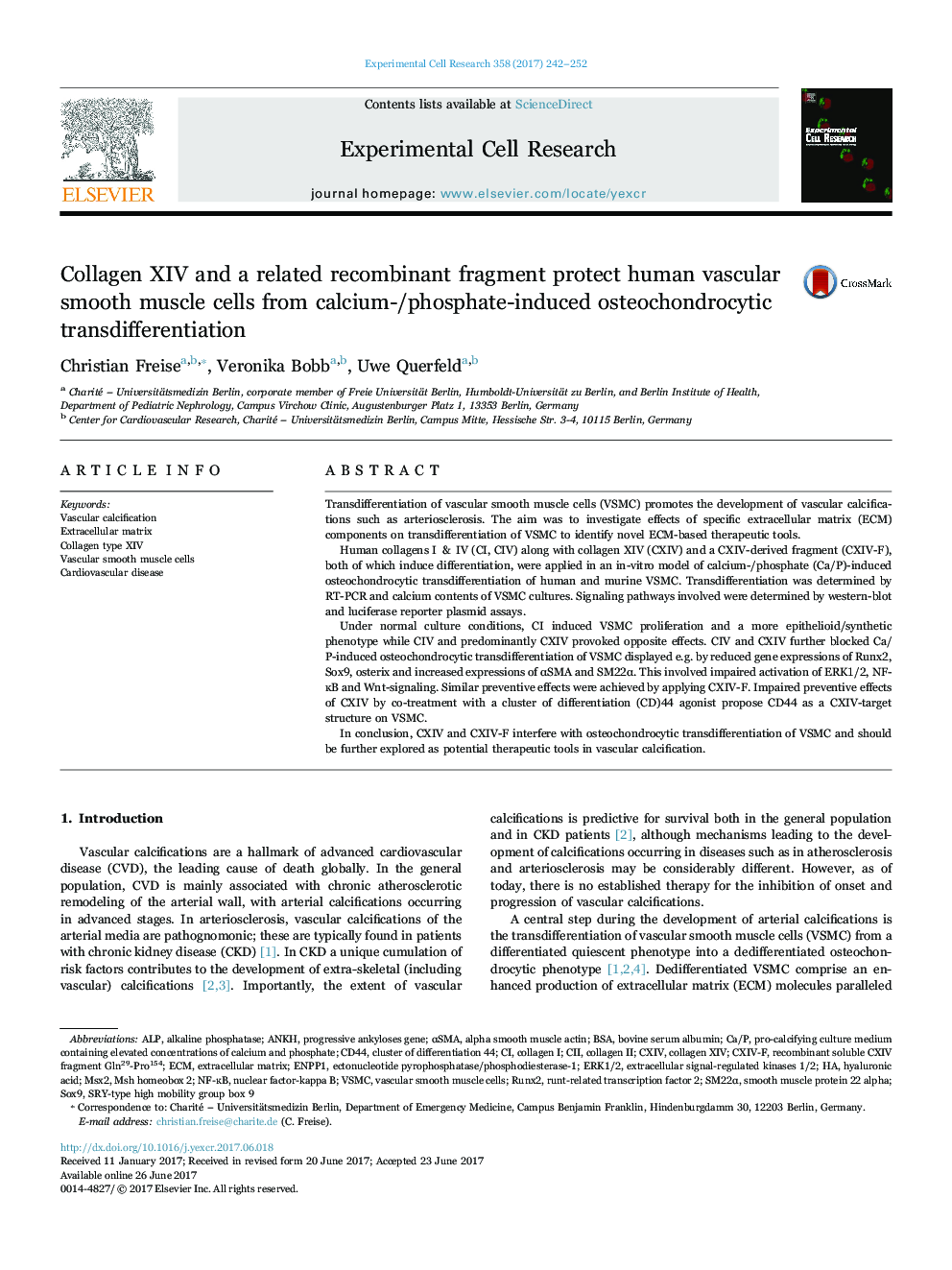| کد مقاله | کد نشریه | سال انتشار | مقاله انگلیسی | نسخه تمام متن |
|---|---|---|---|---|
| 5527162 | 1401568 | 2017 | 11 صفحه PDF | دانلود رایگان |

- Collagen XIV maintains a quiescent contractile VSMC phenotype.
- Collagen XIV blocks mineral-induced osteochondrocytic VSMC transdifferentiation.
- Similar preventive effects were observed for a Collagen XIV-derived fragment.
- Collagen XIV reduces activation of ERK1/2, NF-ĸB- and Wnt-signaling in VSMC.
- Data point to CD44 as a target structure of collagen XIV on VSMC.
Transdifferentiation of vascular smooth muscle cells (VSMC) promotes the development of vascular calcifications such as arteriosclerosis. The aim was to investigate effects of specific extracellular matrix (ECM) components on transdifferentiation of VSMC to identify novel ECM-based therapeutic tools.Human collagens I & IV (CI, CIV) along with collagen XIV (CXIV) and a CXIV-derived fragment (CXIV-F), both of which induce differentiation, were applied in an in-vitro model of calcium-/phosphate (Ca/P)-induced osteochondrocytic transdifferentiation of human and murine VSMC. Transdifferentiation was determined by RT-PCR and calcium contents of VSMC cultures. Signaling pathways involved were determined by western-blot and luciferase reporter plasmid assays.Under normal culture conditions, CI induced VSMC proliferation and a more epithelioid/synthetic phenotype while CIV and predominantly CXIV provoked opposite effects. CIV and CXIV further blocked Ca/P-induced osteochondrocytic transdifferentiation of VSMC displayed e.g. by reduced gene expressions of Runx2, Sox9, osterix and increased expressions of αSMA and SM22α. This involved impaired activation of ERK1/2, NF-ĸB and Wnt-signaling. Similar preventive effects were achieved by applying CXIV-F. Impaired preventive effects of CXIV by co-treatment with a cluster of differentiation (CD)44 agonist propose CD44 as a CXIV-target structure on VSMC.In conclusion, CXIV and CXIV-F interfere with osteochondrocytic transdifferentiation of VSMC and should be further explored as potential therapeutic tools in vascular calcification.
Journal: Experimental Cell Research - Volume 358, Issue 2, 15 September 2017, Pages 242-252